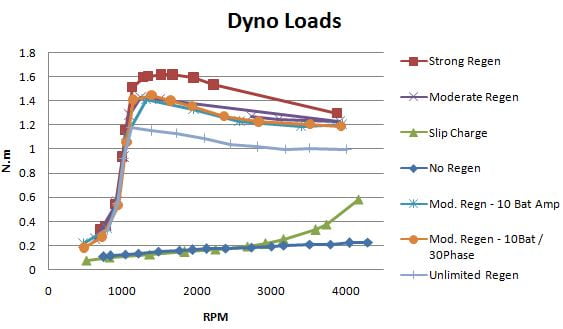adrian_sm
1 MW
Man your dyno looks beautiful. Wish I had access to your machine shop. Then my dyno and resistive load bank wouldn't look so dodgy.
Where did you find the big light bulbs? How much? Those would have saved me wasting an evening sucking solder fumes paralleling 35w 12V halogen bulbs.
Can you easily adjust the load your alternator applies via the field coil voltage or something? The ability to easily adjust the load would be the highest thing on my wish list for upgrades to my dyno. Then I could easily keep the torque load constant while playing with speed, controller voltage, motor, etc. At the moment with a resistive or regen load the load is very dependent on the motor speed.
Here is a post I made that characterised my various load options at the time.

Keep up the good work.
- Adrian
Where did you find the big light bulbs? How much? Those would have saved me wasting an evening sucking solder fumes paralleling 35w 12V halogen bulbs.
Can you easily adjust the load your alternator applies via the field coil voltage or something? The ability to easily adjust the load would be the highest thing on my wish list for upgrades to my dyno. Then I could easily keep the torque load constant while playing with speed, controller voltage, motor, etc. At the moment with a resistive or regen load the load is very dependent on the motor speed.
Here is a post I made that characterised my various load options at the time.
Keep up the good work.
- Adrian

